The history of the beautiful University Club in Tuscaloosa dates back to the very beginning of the state of Alabama. Captain James H. Dearing, who built the mansion, arrived in Tuscaloosa before Alabama became a state.
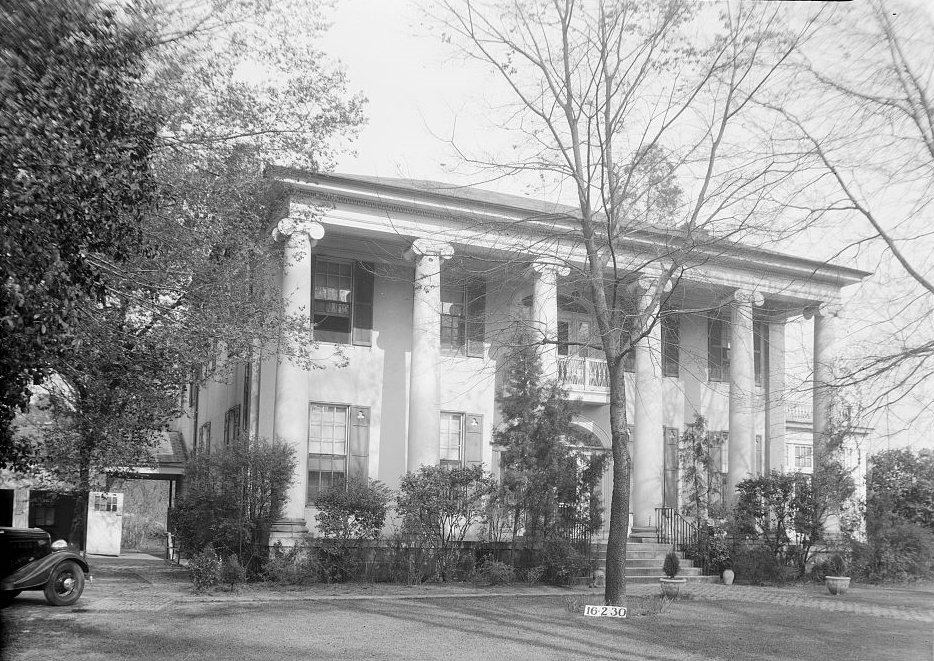 Dearing-Bagby house 1939 by photographer Frances Benjamin Johnston (Library of Congress)
Dearing-Bagby house 1939 by photographer Frances Benjamin Johnston (Library of Congress)
No man had a better right to be merry
Captain James H. Dearing came to Tuscaloosa on an exploratory trip in 1816. He stayed at a “little shanty of a hotel” kept by Joshua Halbert. This hotel was located close to the site of the old water tower at the north end of Twenty-seventh Avenue.
There on Christmas Day in 1816 Dearing made the first eggnog ever made in Tuscaloosa and was said to have remarked at the time, “No man had a better right to be merry on that ancient Christmas morning than a pioneer of 1816 piercing the Alabama wilderness, then thick with Indians.”
Captain James H. Dearing was born in Rockingham County, North Carolina in 1787. Captain Dearing had served in the United states Army during the War of 1812 and at one time had the command of Fort Moultrie near Charleston. He resigned his commission not long after the declaration of peace.
After his visit to Alabama, he returned to North Carolina and purchased a cargo of tobacco that he sold at Mobile and St. Stephens.
In June 1819 he married Julia A. Searcy, the sister of Dr. Reuben Searcy. The same year he moved across the vast wilderness from North Carolina to the State of Alabama in private carriages and wagons. The trip took four weeks. The family resided for short time in St. Stephens which was the most populated place in Alabama at the time.
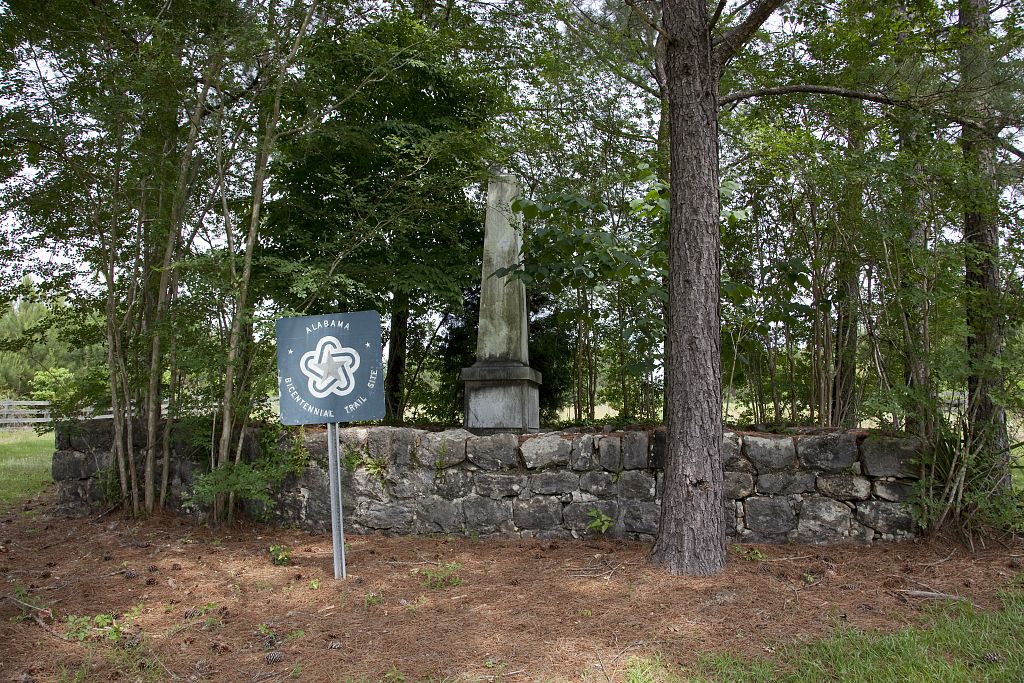 Old St. Stephens, Alabama today
Old St. Stephens, Alabama today
Dearing established himself as a merchant in St. Stephens, but quickly became frustrated with the slow mode of river transportation by barges so he built a steamboat called the Tombigbee, and upon it he transported his family and goods to Tuscaloosa. The boat was built at the town of Blakely and was the second boat that ever penetrated the Warrior River to Tuscaloosa.
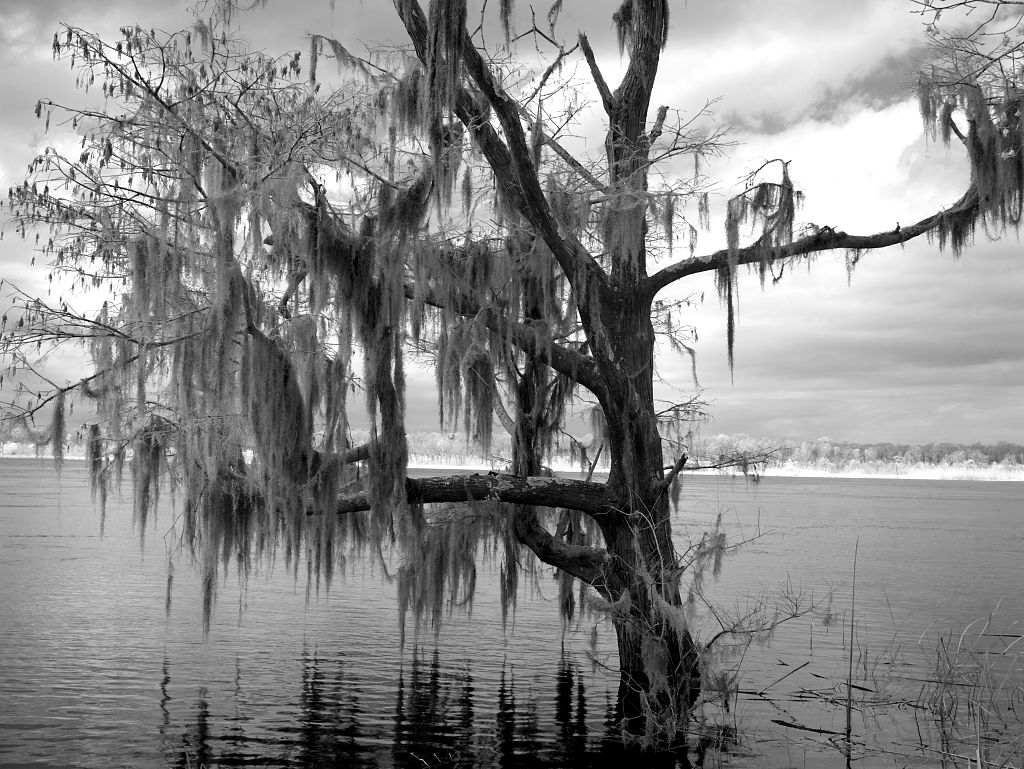 Blakely, Alabama by Carol Highsmith 2010
Blakely, Alabama by Carol Highsmith 2010
Once in Tuscaloosa, he built a log storehouse on Main street on the lot afterwards known as No. 165 which later became the location of the City National Bank. As the town increased in population, he enlarged his storehouse into a commodious frame building, where he lived until the capital of the State was moved to Tuscaloosa.
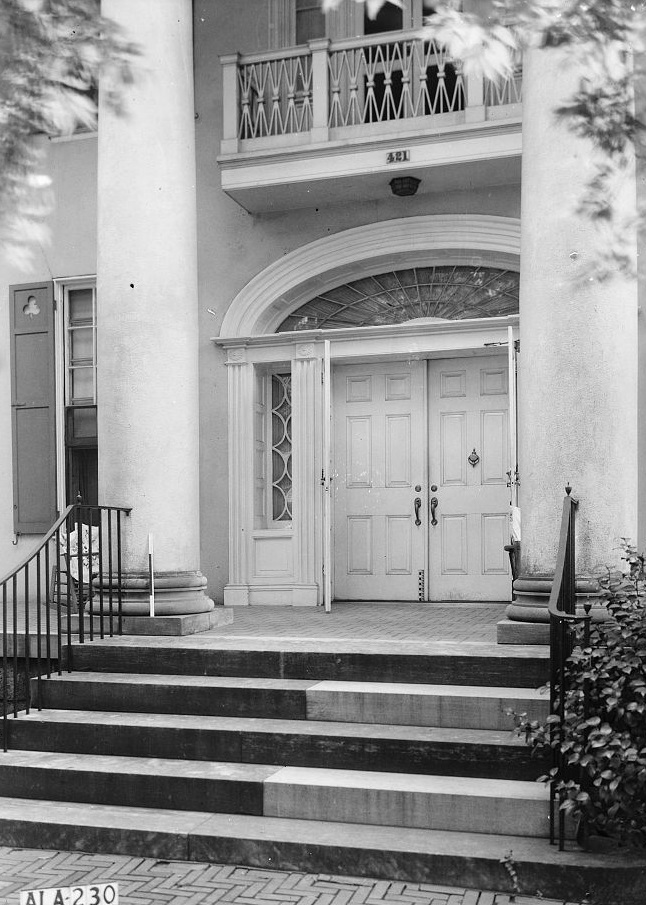 Front of Dearing-Bagby house 1939 by photographer Frances Benjamin Johnston (Library of Congress)
Front of Dearing-Bagby house 1939 by photographer Frances Benjamin Johnston (Library of Congress)
Dearing was also engaged in agriculture and continued in the operation of steamboats and steam-mills. Sometimes he commanded his own boats. Keeping pace with the spirit of the age, he erected four brick store-rooms on Main Street and continued in the mercantile business with his brothers until around 1849. He amassed a considerable fortune before he retired to a more private life of planting until his death on 4th of March, 1861.
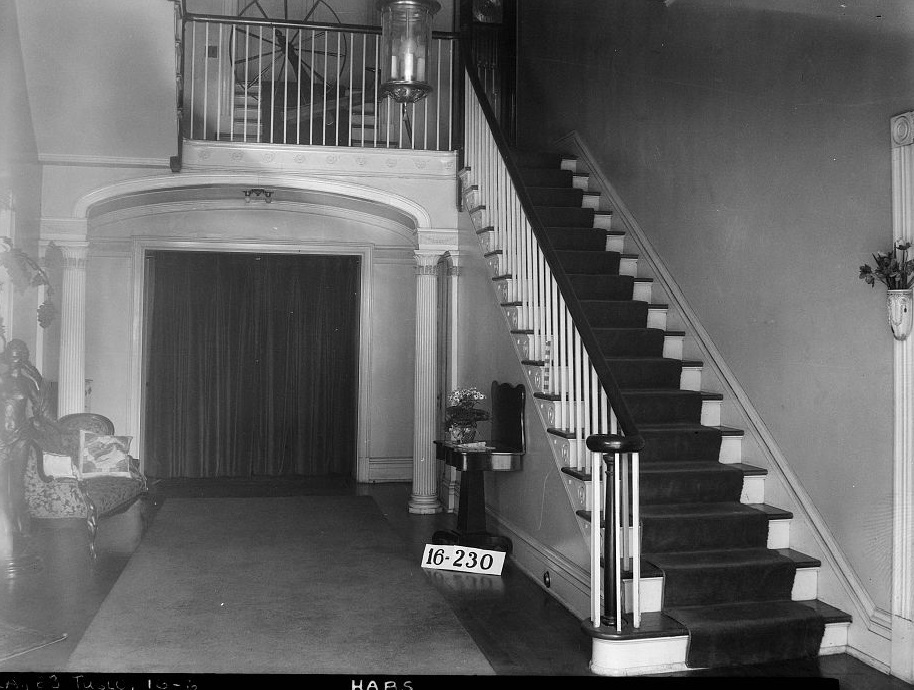 Dearing-Bagby house front hall and stairs 1939 by photographer Frances Benjamin Johnston (Library of Congress)
Dearing-Bagby house front hall and stairs 1939 by photographer Frances Benjamin Johnston (Library of Congress)
Dearing built the splendid mansion on Main street which is now the University Club. It was believed to be designed by the famous architect, William Nichols. Dearing and his family only lived two years in his beautiful mansion because it was said that “students from the University helped themselves to their poultry and fruit and trampled Mr. Dearing’s cherished flowers. Dearing noted in a letter to the editor of the local paper that “night after night and week after week…..companies of student came by…..singing songs, most obscene, and using language that was most disgraceful and offensive to decency.”
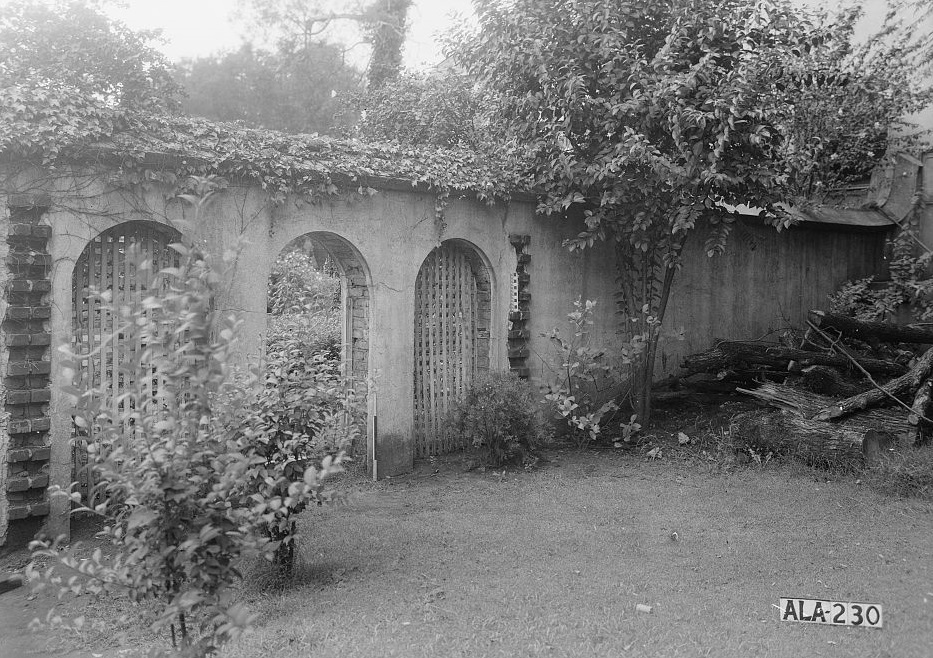 Dearing-Bagby house garden wall 1939 by photographer Frances Benjamin Johnston (Library of Congress)
Dearing-Bagby house garden wall 1939 by photographer Frances Benjamin Johnston (Library of Congress)
“To further exacerbate the situation, Dearing house became involved in a controversy concerning a woman servant whom students spirited from his house to the University. This controversy ultimately erupted in a near riot on the University campus when Dearing arrived to search for the young woman.
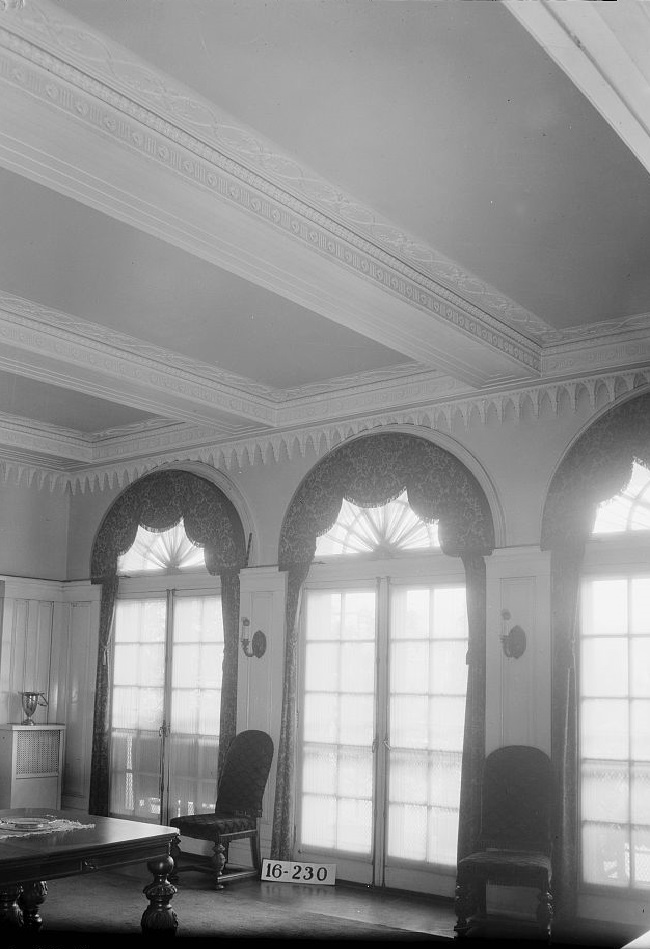 Dearing-Bagby house 1939 by photographer Frances Benjamin Johnston (Library of Congress)
Dearing-Bagby house 1939 by photographer Frances Benjamin Johnston (Library of Congress)
In retaliation for Mr. Dearing’s part in this episode, the students attacked his home and destroyed Dearing’s front gate. Students then raided his hen house, where he and the students exchanged gun shots. In the exchange of fire, one of the students–ironically the son of a friend of his–was injured.
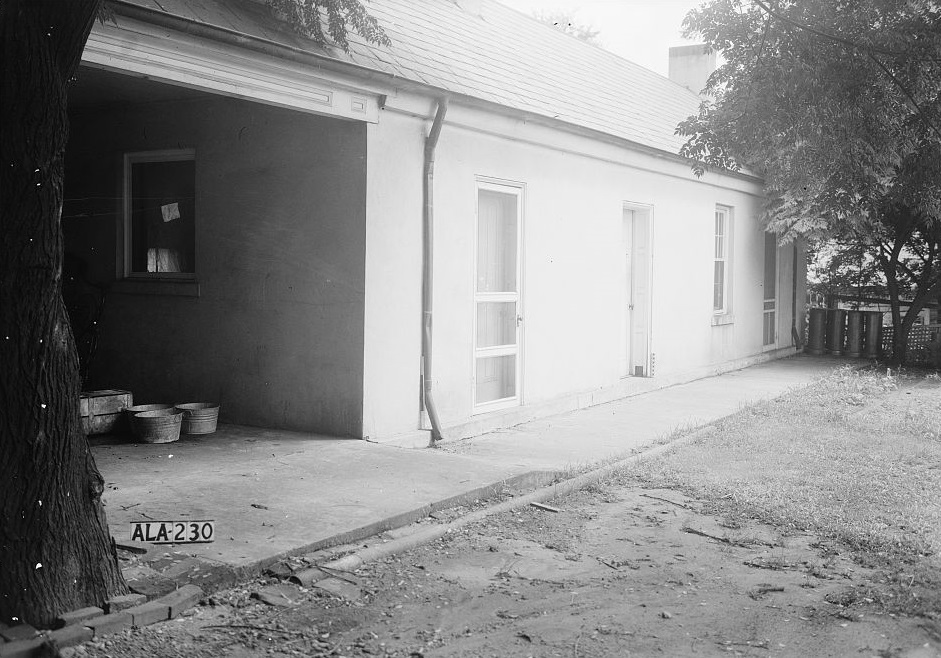 Dearing-Bagby house slave headquarters 1939 by photographer Frances Benjamin Johnston (Library of Congress)
Dearing-Bagby house slave headquarters 1939 by photographer Frances Benjamin Johnston (Library of Congress)
As a result, Dearing built a new home to the south and away from the main line of traffic between the University and town. In 1836, Dearing sold his original home to Richard H. Lewis for $14,500.”i
Dearing became a director of the State Bank and a member of the Legislature. It is believed that he exerted a material influence in causing the removal of the state capitol from Cahaba to Tuscaloosa.
In March 1838, Lewis sold the house to Governor Bagby while the capitol was in Tuscaloosa and was the wonder of the town when first erected. He used it as the official residence while he was Governor and it became known as the Governor’s mansion.ii
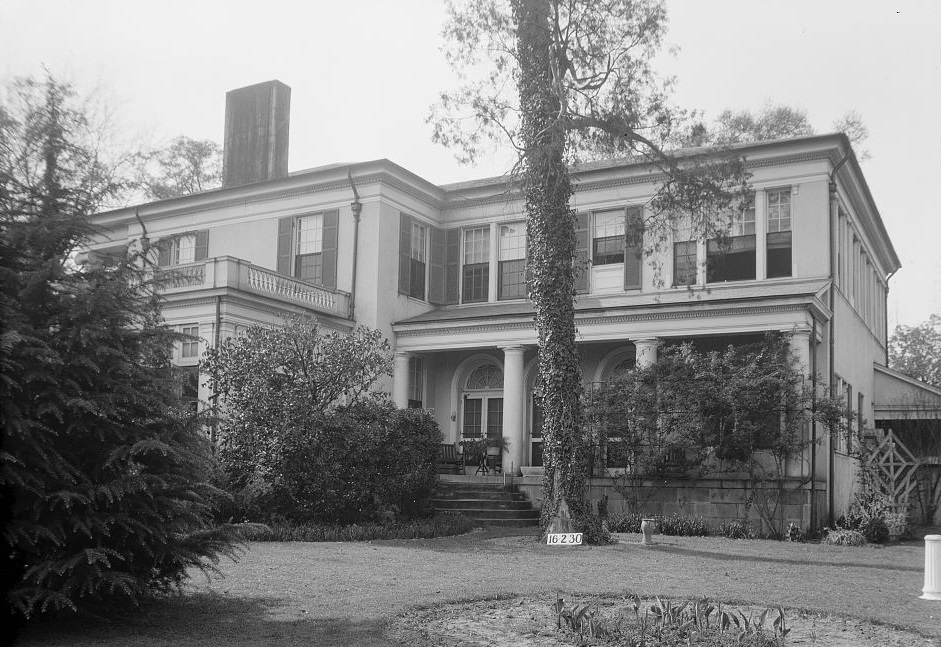 Dearing-Bagby house back 1939 by photographer Frances Benjamin Johnston (Library of Congress)
Dearing-Bagby house back 1939 by photographer Frances Benjamin Johnston (Library of Congress)
The house was sold again in 1843 to Reverend Benjamin Sykes; 1851 to Augustus Sykes; 1852 inherited by Richard N. Harris; and in 1871 inherited by Judge Somerville, the founder of the University of Alabama Law School and who was a Justice of the Alabama Supreme Court. In 1900, the mansion was purchased by Dr. James L. Williamson, and then Dr S. E. Deal acquired in in 1922 for about $16,500. This was the last time the home was used as a residence.
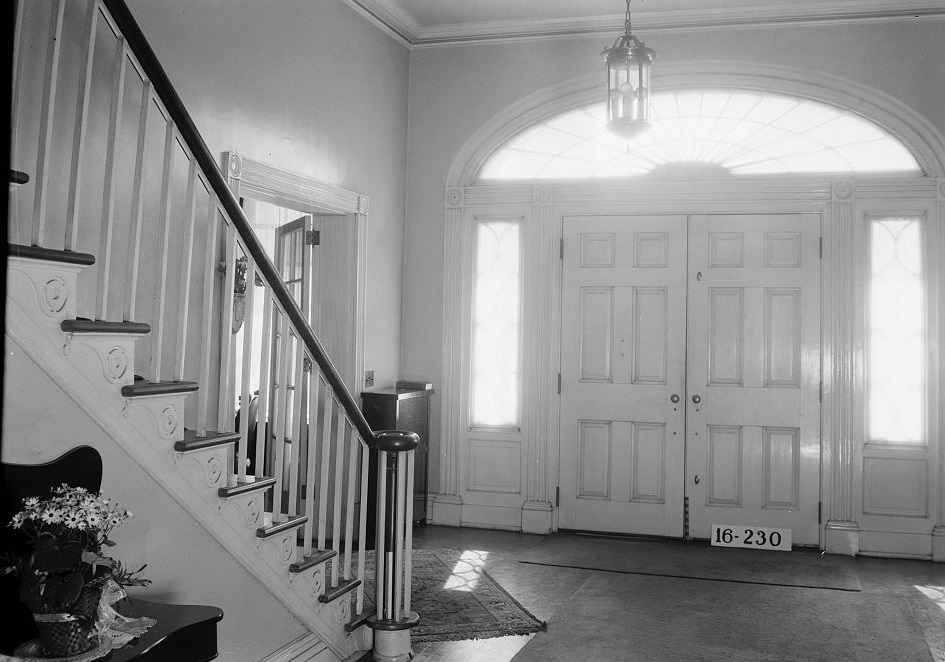 Dearing-Bagby house front hall 1939 by photographer Frances Benjamin Johnston (Library of Congress)
Dearing-Bagby house front hall 1939 by photographer Frances Benjamin Johnston (Library of Congress)
Dr. Forney purchased the house in May 1939 and used the house and buildings as an office until WWII. Shortly afterward, the house was used to entertain servicemen during the war. In 1944, Mr. and Mrs. H. D. Warner, with the encouragement of University President Raymond Paty, acquired the home and helped furnish it as a social center for faculty and staff and it was presented to the University of Alabama. In 1946, the house was opened as the University Club.
Today the University Club is a “historical landmark in Tuscaloosa providing excellent cuisine for private dining and, creating memorable experiences for The University community and other area residents.”
SOURCES
- Smith, William Russell, Reminiscences of a long life: historical, political, personal and literary, Volume 1, 1889, Tuscaloosa, Alabama
- History of the University Club
ALABAMA FOOTPRINTS: Settlement: Lost & Forgotten Stories is a collection of lost and forgotten stories of the first surveyors, traders, and early settlements of what would become the future state of Alabama.
Read about:
- A Russian princess settling in early Alabama
- How the early setters traveled to Alabama and the risks they took
- A ruse that saved immigrants lives while traveling through Native American Territory
- Alliances formed with the Native Americans
- How an independent republic, separate from the United States was almost formed in Alabama


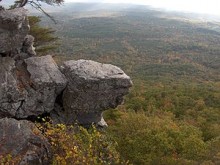
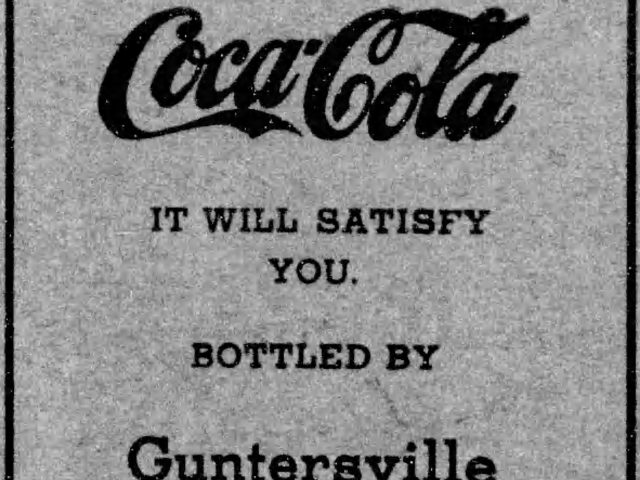
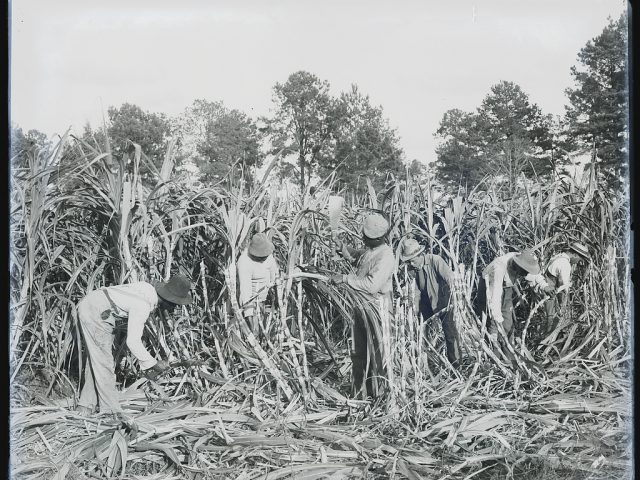
He may have financed(cotton/slaves) the building of the mansion, but it was built by Africans. Nice history about him in the article.
I would share a photo of my THS class reunion on the front steps, but this site does not allow for that 🙁
Had Bryan and Jess rehearsal dinner here.
It is a magnificent house. I was married there.
Our 50 year class reunion was there.
Iove to li ve there.
was there a couple of months ago………………a beautiful building.
Peggy Deal Dr. Deal related to you?
Yes. Dr. S.E. was my great-uncle.
Beautiful
Beautiful
Dr. James L. Williamson was my great grandfather. He delivered my father in the upstairs bedroom on November 11’1918 . My home sits where the garden once was and we still find university students in the yard.
[…] 1826, Tuscaloosa became the capital, in the administration of Gov. John Murphy, who had been chosen the year […]
Emily D Graham…get us a dinner reservation!
Ben Richards!!!
Had Bryan and Jessica’s rehearsal dinner there. Beautiful!!!
The site of Bryan and Jessica’s rehearsal dinner!!!
During my college years at the University Club, I was the bookkeeper and was paid $300 a month 100 hours of work, and I got my noon meal as part of my salary. What a joy it was!
It would be nice if Noble Hall could be used in a similar fashion, at Auburn.
Always get spam when I open your links. Might want to check on that.